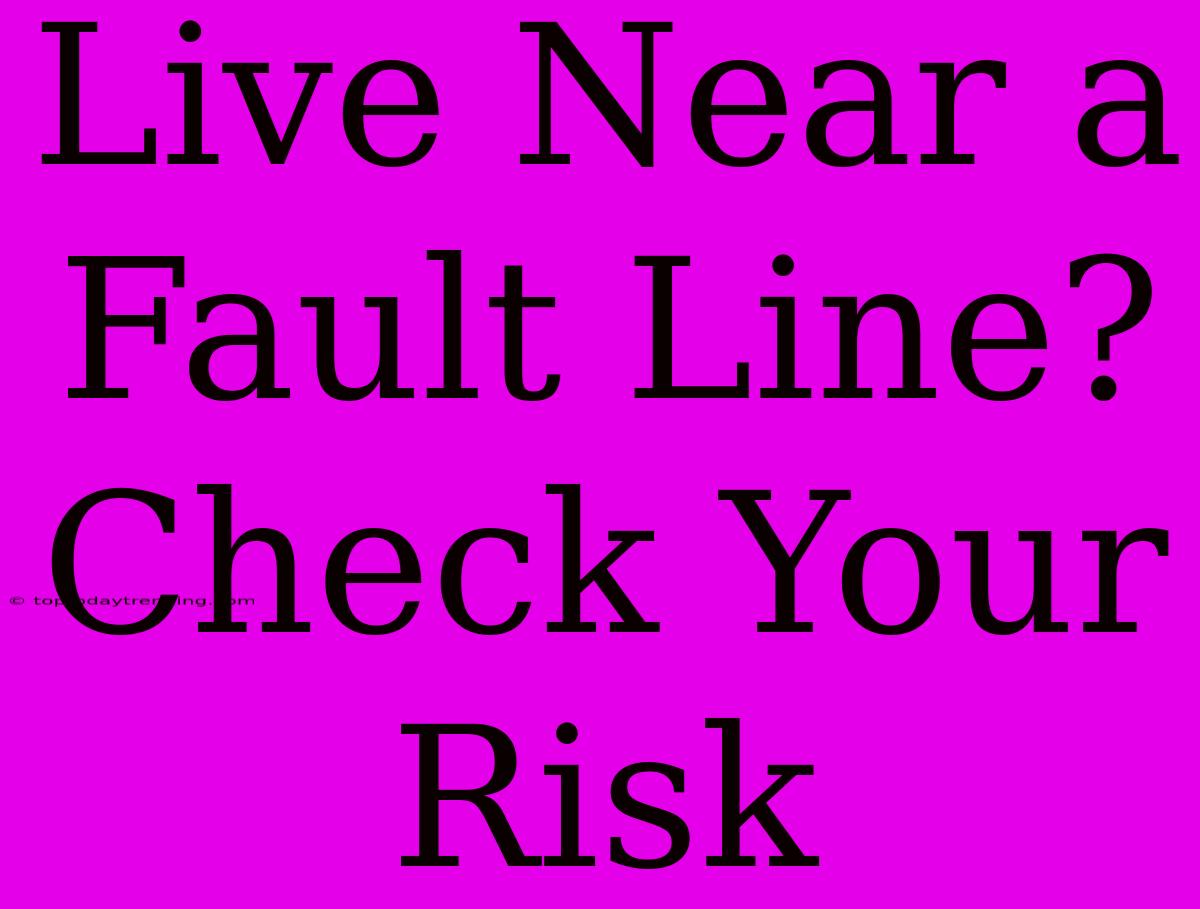Live Near a Fault Line? Check Your Risk
Living near a fault line can be exciting, but it also comes with inherent risks. Earthquakes are a natural phenomenon that can cause significant damage and disruption to life. Therefore, it's crucial to understand your risk and take necessary precautions to ensure your safety.
What is a Fault Line?
A fault line is a fracture in the Earth's crust where tectonic plates meet and move against each other. These movements can cause seismic waves, which we experience as earthquakes. The intensity of an earthquake depends on the magnitude of the movement along the fault line and the distance from the epicenter.
Are You at Risk?
1. Identify Your Location: The first step is to determine if you live near a known fault line. You can use online resources like the United States Geological Survey (USGS) website or consult with local geological experts.
2. Understand Your Seismic Zone: Fault lines are often categorized into different seismic zones based on their activity and potential for significant earthquakes. Knowing your seismic zone can help you understand the potential risks and appropriate safety measures.
3. Assess Your Home's Construction: The structural integrity of your home plays a critical role in its resistance to earthquake damage. Consult with a structural engineer to evaluate your home's resilience and identify potential areas for improvement.
What to Do Before, During, and After an Earthquake
Before:
- Create an Emergency Plan: Develop a family communication plan and emergency kit. Include essential supplies like food, water, first aid kit, flashlight, and batteries.
- Secure Heavy Objects: Secure heavy furniture and appliances to prevent them from falling during an earthquake.
- Learn First Aid and CPR: Be prepared to administer basic medical care in case of an emergency.
During:
- Stay Calm and Drop, Cover, and Hold On: Seek shelter immediately by dropping to the ground, covering your head and neck, and holding onto a sturdy object.
- Stay Away from Windows and Mirrors: Avoid areas where glass may shatter.
- If Indoors, Stay Indoors: If you're in a building, stay inside until the shaking stops. Do not attempt to exit while the earthquake is in progress.
After:
- Check for Injuries: Assess yourself and your loved ones for injuries and administer first aid if necessary.
- Check for Gas Leaks: If you smell gas, evacuate immediately and call the gas company.
- Stay Informed: Listen to local news and emergency broadcasts for updates and instructions.
Protect Your Home and Family
Taking proactive steps to assess and mitigate your risk can significantly improve your safety and reduce potential damage.
Here are some additional recommendations:
- Install Earthquake-Resistant Features: Consider retrofitting your home with earthquake-resistant features like bracing walls and installing flexible plumbing connections.
- Check Your Insurance: Ensure your homeowner's insurance policy covers earthquake damage.
- Stay Informed and Prepared: Participate in earthquake preparedness workshops and drills to practice safety measures.
Living near a fault line presents unique challenges, but with knowledge and preparedness, you can minimize your risks and ensure the safety of yourself and your family.

